#crotone
Text
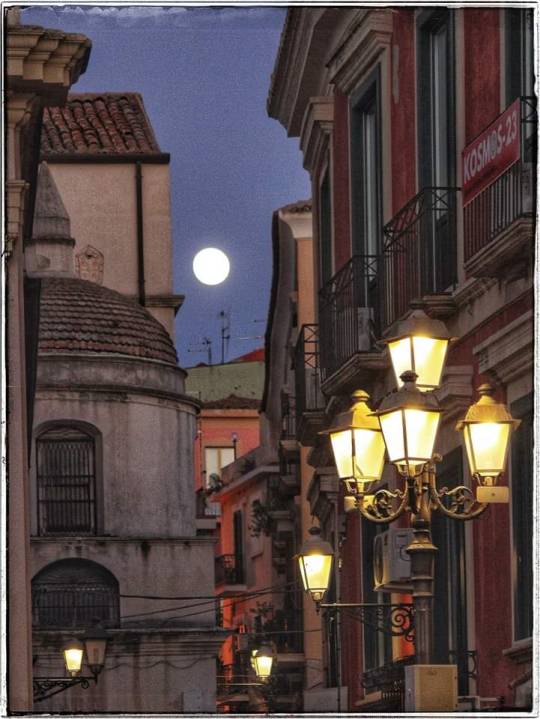
Full moon over Crotone, Calabria, Italy
Photo by Michele Milano
Follow us on Instagram, @calabria_mediterranea
#full moon#crotone#calabria#italy#italia#goodnight#south italy#southern italy#mediterranean#italian#europe#night view#by night
153 notes
·
View notes
Text

#lasagne#pasqua#calabria#magna grecia#besciamella#scandale#crotone#formaggio#pasta#auguri#blog italiano
346 notes
·
View notes
Text
Naufragio in Calabria.
Sono morte così tante persone che ancora non riescono a contarle.
E Giorgia Meloni si dice addolorata.
– Un ragazzo sta affogando!
– Che nessuno lo aiuti!
– Perché?
– Affogano per colpa di chi soccorre.
– Mi tuffo io!
– Ho detto di no!
– Ma non c'è tempo da perdere!
– Ti proibisco di aiutare quel tizio. Non farmelo ripetere!
– No! È affogato!
– Sono addolorata!
FINE
[L'Ideota]
71 notes
·
View notes
Photo


Crotone, Burg-Mauer
26 notes
·
View notes
Text

Il pensiero di Anna Foglietta sul Ministro Piantedosi
11 notes
·
View notes
Text

"The 500 that's there since 500"
3 notes
·
View notes
Text
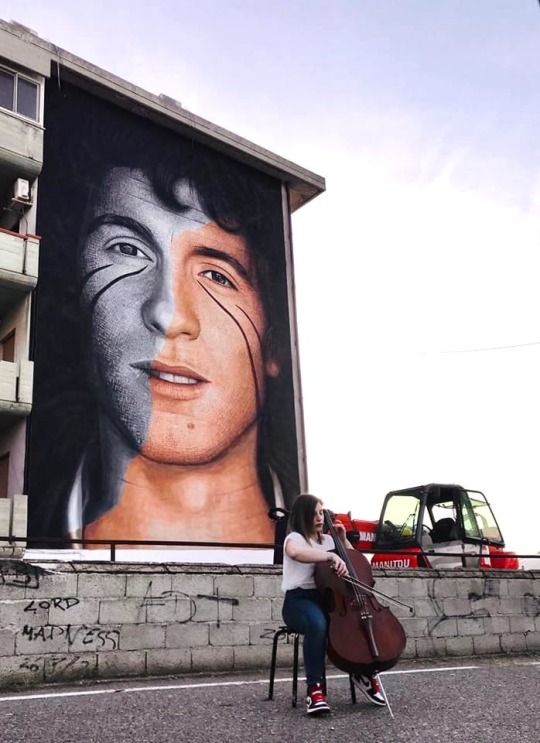
Crotone ❤️
20 notes
·
View notes
Text
BENI CULTURALI/ Crotone, al via il restauro del Bastione San Giacomo nel Castello Carlo V
#BENICULTURALI/ #Crotone, al via il restauro del #BastioneSanGiacomo nel #CastelloCarloV
La fortezza conserva elementi dell’architettura militare sia medievali che rinascimentali, con torri circolari verso l’entroterra e bastioni sul mare
#Calabria
Al via, finalmente, i restauri del Bastione di San Giacomo del Castello Carlo V di Crotone, struttura militare costruita intorno all’800 d.C. per difendere la città dalle incursioni saracene e poi ristrutturata da Carlo V d’Asburgo. La fortezza è un raro esempio di complesso che conserva elementi dell’architettura militare sia medievali che rinascimentali, con torri circolari verso l’entroterra e…

View On WordPress
#Bastione San Giacomo#beni culturali#Calabria#Carlo V#Crotone#MiC#notizie#restauri#Segretariato Regionale del Ministero della Cultura per la Calabria
5 notes
·
View notes
Text
Sirens of Greek Myth Were Bird-Women, Not Mermaids
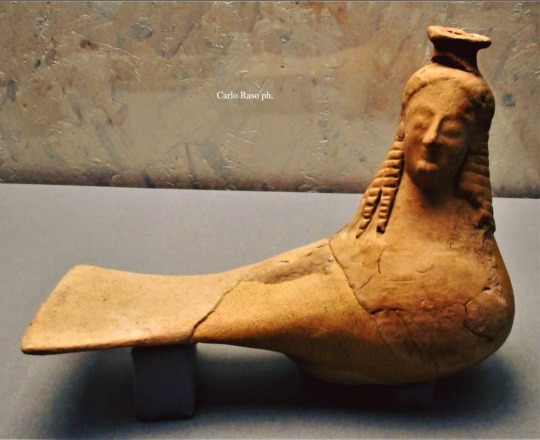
Bottle-askos in the shape of a siren (2nd half 6th century BC) from Locri / Southern Italy's Calabria. National Museum of Magna Graecia (Reggio Calabria, Italy).
In the wine-dark expanse of the Mediterranean Sea, far from the halls of civilization, there was once a small island—or so Homer, the famed poet of Ancient Greece, wrote in his epic The Odyssey. No buildings occupied its flowery meadows; no fisherman worked its shores. Those who passed in their black ships heard only voices, twining over the windless waves, singing a song that promised knowledge of all things. Once they heard it, they were enchanted; they had no choice but to land and seek out the singers. Those who did never left the island; their bodies remained, rotting amid the flowers, for none who heard the Sirens' song could escape it.
The story of the Sirens has inspired writers, poets, and artists for millennia. But somewhere along the way their form was confused. Today, Sirens are almost always represented as voluptuous mermaids, whose beauty and sexuality lure men to their deaths. But the Classical Greeks understood the Sirens differently: as bird-women, creatures that Mediterranean cultures traditionally associated with hidden knowledge.

Sirens first appear in the literary record with the Odyssey (written around 750 BCE) in a segment that’s much briefer than you’d think considering the cultural impact of these mystical, singing creatures. It goes like this: Odysseus, warned by the enchantress Circe of the danger posed by the Sirens’ song, orders his crew to stuff their ears with wax. But, curious to a fault, he has himself bound to the ship’s mast so he can listen without flinging himself into the sea. The Sirens promise him tales of all that had occurred during the war at Troy, and everywhere else besides; enchanted, he begs his crew to release him. He rants, raves, and threatens, but to no avail. His crew sails on until the song fades in the distance, and so saves his life.
Homer doesn’t describe the Sirens’ physical appearance in his epic poem, Wilson says. But in ceramic paintings and tomb sculptures from the time of writing, and centuries after, Sirens were usually depicted with taloned feet, feathered wings, and a beautiful human face. The bird-body of the Siren is significant to Wilson: In the eyes of traditional peoples all across Europe, birds were often graced with an otherworldliness associated with gods, spirits, and omens.

They inhabit the water, the air, and the earth. They’re also associated with song; they have voices that are not human voices, and kinds of movement that are not the same as human kinds of movement.
The Sirens’ role in tomb art is particularly telling. In ancient Mediterranean and Middle Eastern cultures—as far back as 7,000 years ago—birds were often depicted carrying spirits to the underworld. In Southern Italy's Calabria, archaeologists unearthed several Greek askos (unguentary vessel) in shape of sirens, most commonly found in tombs.
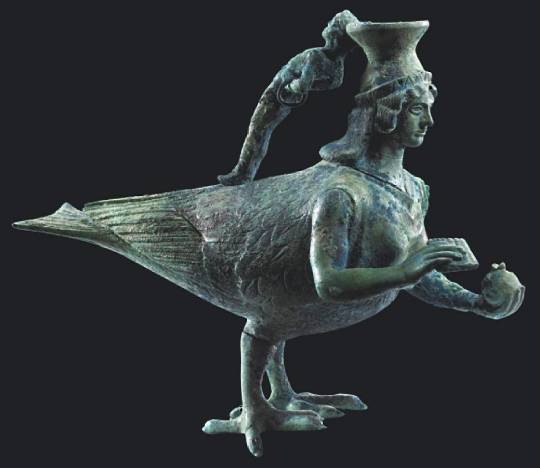
Bronze askos in the shape of a siren (5th century BC) from Crotone, Calabria, Italy - Archaeological Museum of Crotone.
Jump ahead a few millennia to 1,550 BCE, by which time Ba-birds, depictions of departing souls as human-faced birds, began appearing in Egypt. That connection between birds and dead souls seems to have then hopped over to Greece: Writing in the 5th century BCE, the playwright Euripides described the Sirens as at the beck and call of Persephone, one of the rulers of the underworld, while other writers identified the Sirens as rivals and dark echoes of the Muses, those goddesses of creativity.
These are the Sirens the Ancient Greeks would have recognized: bird creatures of the underworld, bridging the human world and what lies beyond. The Sirens—and their fateful songs—then offered a glimpse behind the veil, a chance to hear how earthly glories would echo in eternity. The question of what song the Sirens sing, what is this forbidden knowledge, what's wrong with it, what's the temptation—the text leaves a lot of open space there. Therein lies the seduction.
Yet today, mermaids or beautiful sea nymphs replace the dark, winged Sirens of ancient times.
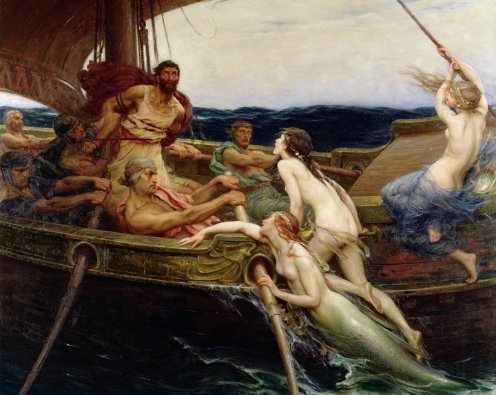
It is during the Middle Ages that the image of the siren began its shift from bird-woman to mermaid . With the transformation of the siren's image, the attributes associated with female monsters shifted. This suggests a change in the traits that were considered monstrous in women. The siren's movement from a frightening bird-woman to a beautiful mermaid represents female beauty becoming monstrous. Throughout the Middle Ages sirens increasingly represented a male fear of female seduction, suggesting a growing fear of female sexuality.
For medieval Christians, sirens were heavily associated with female sin.
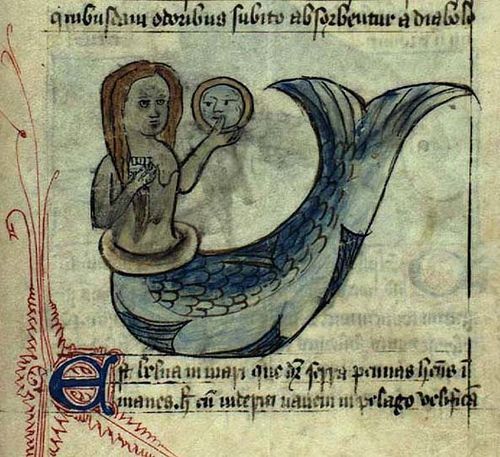
However it happened, the identification of Sirens with mermaids seems to have affected later translations of the Odyssey, and ultimately common knowledge of Sirens. Translators in the 19th and 20th centuries cast the Sirens in a sexualized light. In one prose translation, the Sirens speak of “the sweet voice from our lips,” despite the word στομάτων directly translating to the less sensual “mouths.” Another adds flowery descriptors of “each purling note/like honey twining/from our lips.” But unlike the Odyssey’s other island temptresses, Circe and Calypso, the Sirens get no admiring description of their faces or hair. Only their voice is described, and their field of bones and flowers.

That’s a pretty strong indicator that the Sirens are not meant to be read as offering a sexual temptation. You can kiss lips; mouths devour.
Folklore and mythology move on, given enough time. Today, the Siren is just another word for mermaid, and is likely to remain so. But there’s something richly thematic about the Sirens of Classical Greece that deserves to be remembered: in-between creatures on a lonely island, floating between the boundaries of life and death, and offering an irresistible song of both. Water-temptresses are a dime a dozen; the Sirens offer wisdom.
Follow us on Instagram, @calabria_mediterranea

#sirens#calabria#homer#italy#italia#south italy#southern italy#mediterranean#mediterranean sea#the odyssey#ancient greece#greek#greek art#art#terracotta#greek mythology#greek myth#underworld#mermaids#mythological creature#magna graecia#magna grecia#locri#folklore#mythology#siren#mermaid#crotone
87 notes
·
View notes
Text

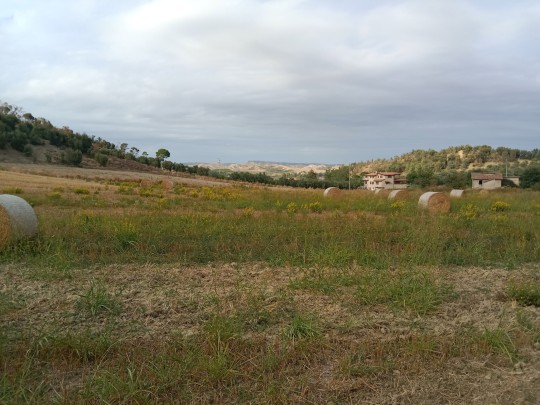



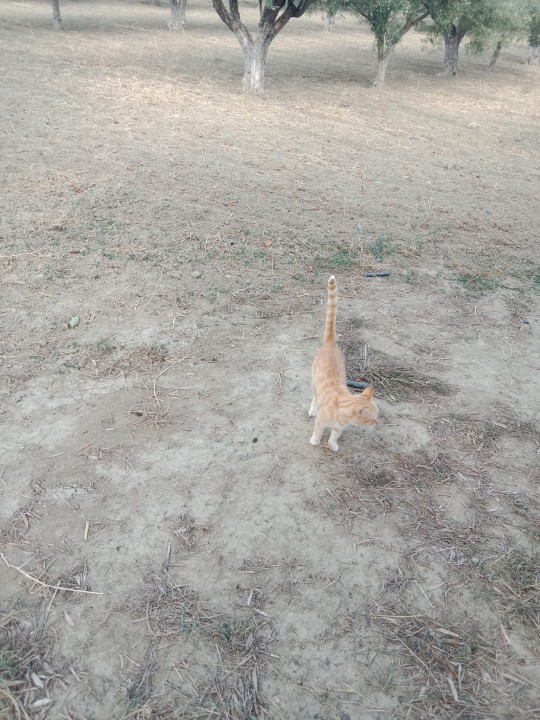

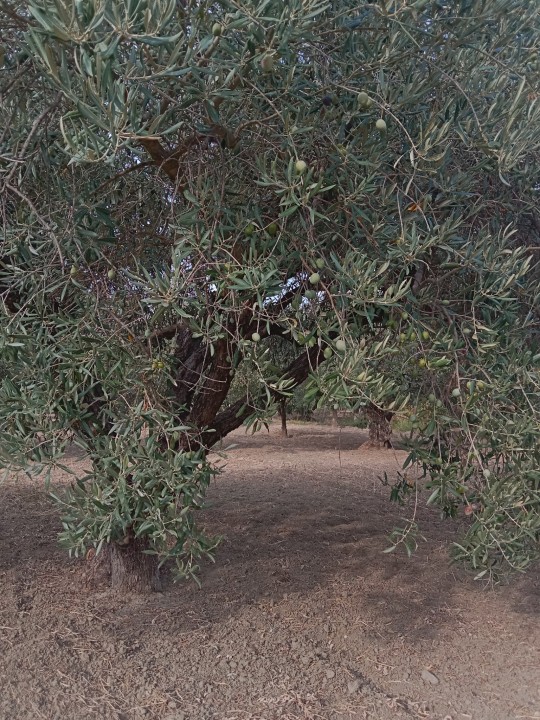
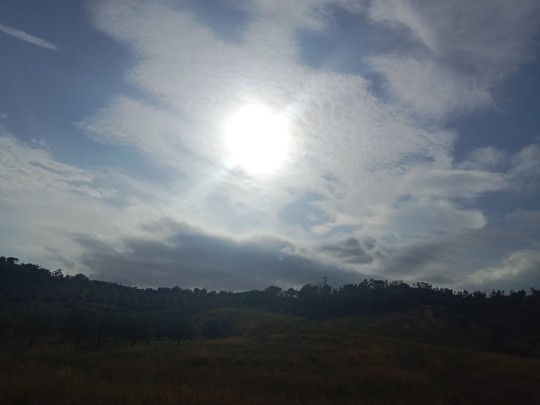
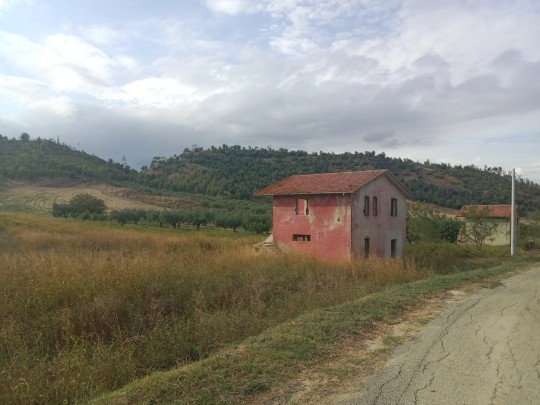
#Calabria bella#calabria#corazzo#scandale#crotone#sole#erba#casa abbandonata#terra#Santa Anastasia#gatto carino#gatto coccolone
6 notes
·
View notes
Text

Sono tornato.
Sono stato assente per molto tempo.
Oggi pubblico questo video alle ore 19 sul mio canale YouTube
Buona giornata a tutti.
#aurelien facente#locandina#photo#smartphoto#videoclip#cortometraggio#videoreport#videomaker#racconto#crotone#night#city#town#walk#calabria#italy
10 notes
·
View notes
Text

Le prime partite di pallone in spiaggia
6 notes
·
View notes
Text
Le Castella 🤍
15 notes
·
View notes
Photo
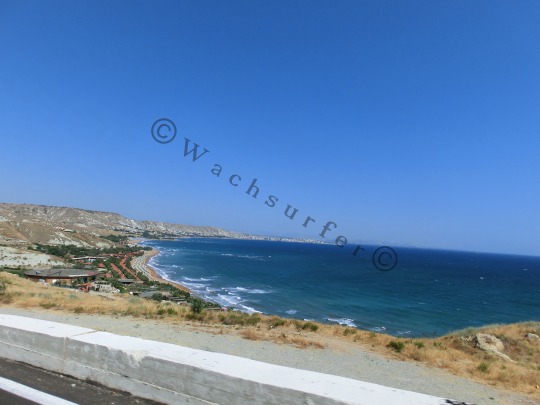

La Costa di Crotone sul Mare Ionio
22 notes
·
View notes
Text
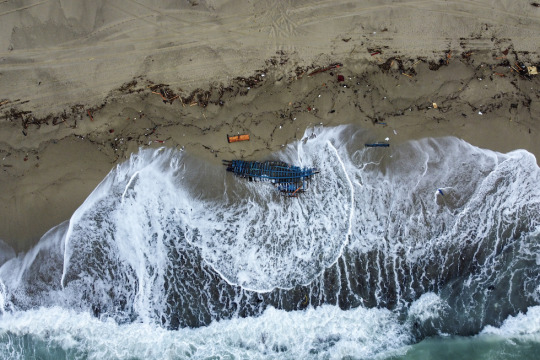
I resti della barca naufragata domenica mattina al largo della costa ionica della Calabria sulla quale stavano viaggiando almeno 180 migranti. Nel naufragio sono morte almeno 62 persone: al momento si sta cercando un numero imprecisato di dispersi.
18 notes
·
View notes
Photo
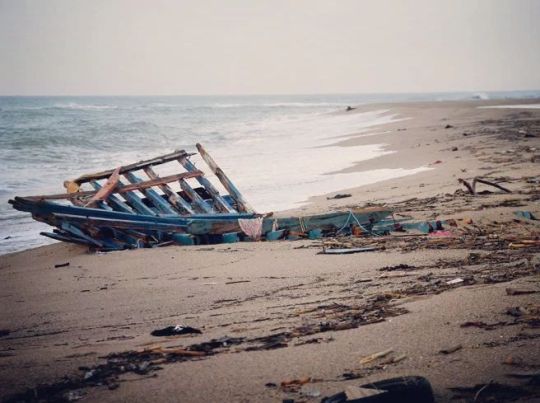
Casualmente, proprio in questo tragico momento dopo il #naufragio di #Crotone, abbiamo scritto al #ComandoGenerale per sottoporre all'attenzione della gerarchia una possibile #soluzione per ovviare a una criticità riguardante il personale del comparto #aeronavale circa l'impiego nell'ambito del dispositivo #Frontex. Analizzare il #problema e proporre #accomodamenti, è questa la cifra del #sindacato serio che in maniera proattiva e sinergica si confronta con la controparte per arrivare all'intesa. 👮🧑✈️ Sempre dalla parte dei colleghi 🇮🇹🇪🇺 #SIMGuardiadiFinanza https://www.simguardiadifinanza.it/2023/03/04/impiego-personale-a-supporto-staff-i-c-c-l-c-c-e-liaison-officer-a-bordo-degli-assetti-navali-esteri-criticita-e-suggerimenti/ (presso Italia) https://www.instagram.com/p/CpYZNBAtZft/?igshid=NGJjMDIxMWI=
#naufragio#crotone#comandogenerale#soluzione#aeronavale#frontex#problema#accomodamenti#sindacato#simguardiadifinanza
3 notes
·
View notes